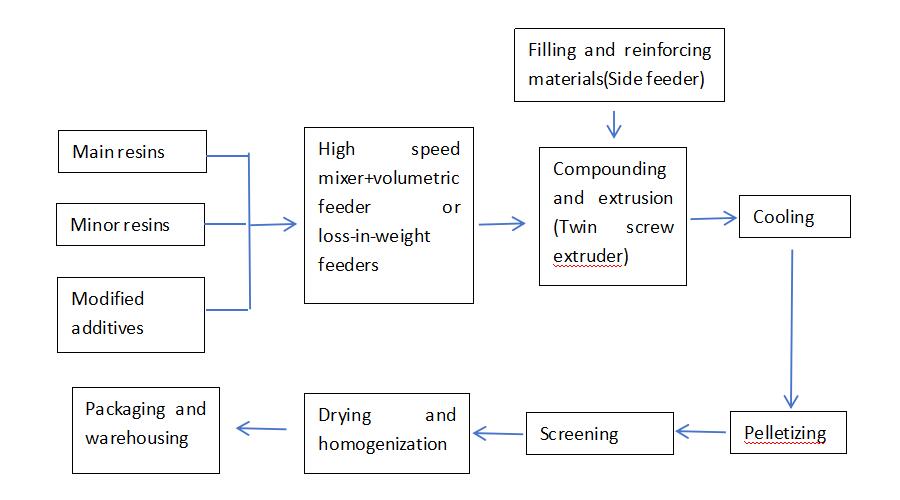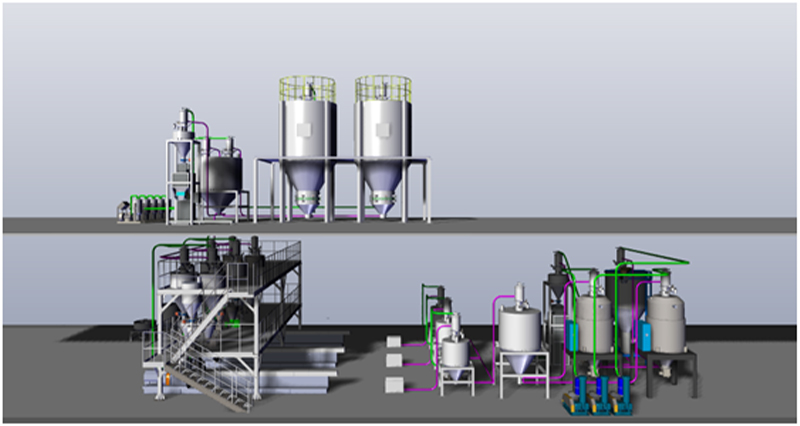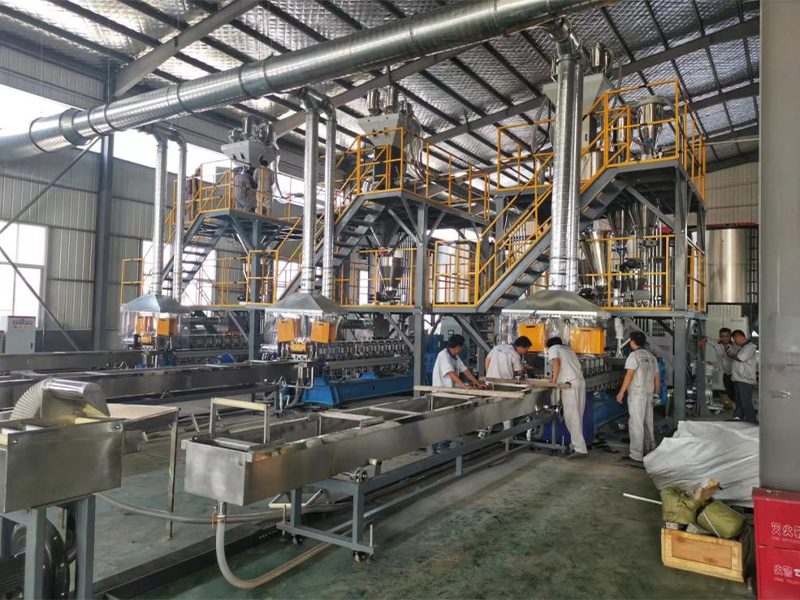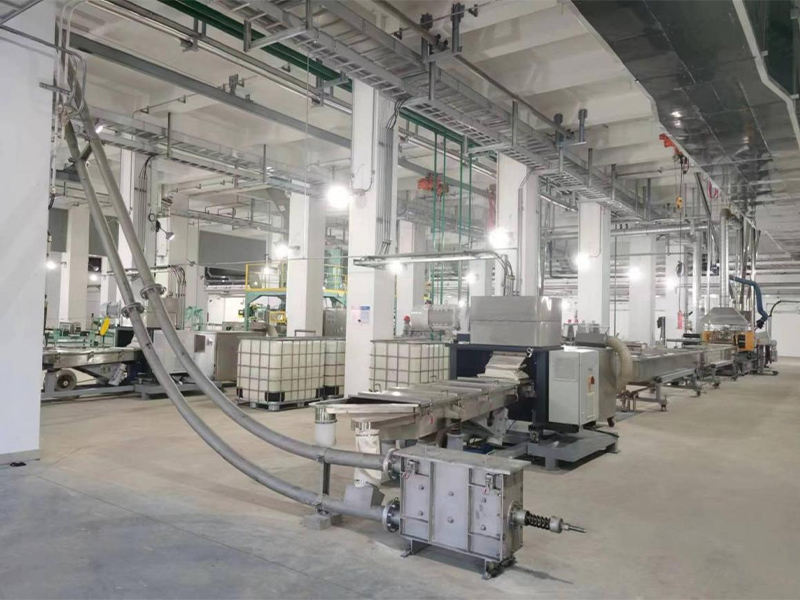The engineering plastic modification refers to improve the strength, impact resistance and flame retardancy of the regular plastic through a filling and compounding process.
Reinforced: Adding fibrous or sheet-like materials such as glass fiber, carbon fiber, and mica powder to plastics to increase material rigidity and strength. Such as glass fiber reinforced nylon.
Increase toughness: Adding materials such as rubber and thermoplastic elastomers to plastics to improve their toughness and impact strength. Toughened polypropylene is commonly used in the automotive, household appliances, and industrial sectors.
Compounding: Uniformly mixing two or more incompatible polymers into a mixture of macroscopic compatibility or microscopic phase separation to meet the requirements of physical and mechanical properties, optical properties, processing performance, etc.
Alloy: Similar to compounding, but with good compatibility between various components, such as PC/ABS alloy or PS modified PPO.It is easy to form a homogeneous system and gain certain functions that is infeasible by a single component.
Filling: To improve physical and mechanical properties or reduce costs by adding fillers to plastic.
Other modifications: Such as using conductive fillers to reduce the electrical resistivity of plastics; Adding antioxidants/light stabilizers to improve the weatherability of materials; Adding pigments/dyes to change the color of the material; Adding internal/external lubricants improves the processing performance of the material; Using nucleating agents to alter the crystallization characteristics of semi crystalline plastics to improve their mechanical and optical properties, and so on.
1. Feed raw materials to the twin screw extruder proportionally through loss-in-weight feeders.
2. Complete the melting, mixing, homogenization, and reaction in the twin screw extruder.
3. Finish the cooling and extrusion in single screw extruder and pelletizing.
4. Pack the pellets after being water-cooled, dehydrated, dried, and stored.

Equipment parameters
Machine Model | Unit | SK63 | SK73 |
Screw Diameter | mm | 63 | 73 |
Max. Screw Speed | rpm | 900 | 900 |
L/D | max | 40-48 | 40-48 |
Motor Power | kw | 250 | 400 |
Capacity | Kg/h | 500-1000 | 800-1800 |
Principle
The feeding electric vibrator is softly connected to the hopper for gravity separation. Although the discharging electric vibrator is also soft connected, its gravity and hopper are supported by tension sensitive sensors . The feeding electric vibrator first feeds to hopper, and when the weigh in hopper reaches the set limit, the feeding stops. Next, the discharging electric vibrator starts, and when the discharging reaches the given weight limit, the discharging will stop. The measurement of material flow rate is determined by the weight of the material lost in the hopper.
Advantages:
1. There will be no layering of materials: physical layering will not occur during transportation due to differences in material characteristics.
2. Highly automated: a touch screen is all you need .
3. Precise formula feeding:Input formula proportion into setting.
4. Efficient and stable product quality: The accuracy error is less than 0.5%, fully ensuring the stability of product quality.
5. Low labor cost: One person can start the entire system production.
6. PLC control system significantly reduces work intensity.
7. High performance, low energy consumption, high torque motors that fully meet the transportation requirements of various materials.
Technical indicators and functions of the loss-in-weight feeding system:
1. System measurement accuracy ≤ ± 0.5%
2. Computer power supply: 220V+10%; 50Hz, 500MA.
3. Proportioning and measurement of multiple materials. Customization of models and measurement of conveying can be based on each type of material.
4. Manually input the content of materials and automatically calculate the proportion of each type of material.
5.Equipped with automatic signal input interfaces for multi-element analysis.
6. Data protection: The built-in battery can save the clock and all data in the event of a power outage.
7. Equipped with a communication interface, it can be connected to the central control room management computer to form a network. According to work requirements, it can be remotely connected and communicated.

Customer case:
A listed company in Cangzhou specializes in TDI (toluene diisocyanate) and PC (polycarbonate). Annual production of 150000 tons of TDI, 100000 tons of PC, 200000 tons of bisphenol A, 160000 tons of caustic soda, 135000 tons of nitric acid, 12000 tons of synthetic leather, and etc. It has broken the technological monopoly, developed and produced high-end PC products- co polymer silicon PC and high molecular weight brominated PC.
We have provided 2 sets of twin screw extruder production lines: SK53 and SK63.
The integrated petrochemical and refining supporting construction project of a certain petrochemical company has an annual output of 600000 tons of ABS.
We have provided 2 sets of SK73 twin screw extruder production lines.

A subsidiary of a certain group company in Qingdao, specializing in sealants, adhesives, polymer extrusion, composite materials, and etc.
We have provided 3 sets of HK73 twin-screw extruder production lines.

A company in Tianjin, mainly engaged in the production of caprolactam chips, is currently the largest PA6 product manufacturing enterprise in northern China, with the most advanced equipment technology and the strongest production capacity.
We have provided 3 sets of twin screw extruder production lines: SK73 HK73 and HK65.
 Tel: +86-25-52706155
Tel: +86-25-52706155
 E-mail: info@kymach.com
E-mail: info@kymach.com
 No.59 West Tianyuan Road, Jiangning, Nanjing, Jiangsu Province, China
No.59 West Tianyuan Road, Jiangning, Nanjing, Jiangsu Province, China